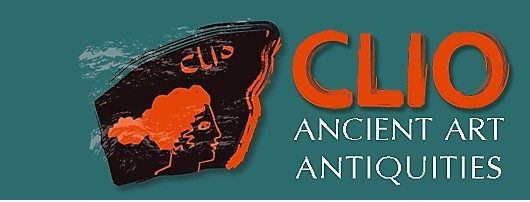A BBC online feature entitled “The men who smuggle the loot that funds IS”, 16 February, 2015, opens with the following remarkable claim: “The trade in antiquities is one of Islamic State’s main sources of funding, along with oil and kidnapping.” At no point in the dozen or so paragraphs that follow does author Simon Cox offer any substantiating documentation for this astonishing claim. His is one in a long series of articles in the popular press that offer sensational headlines concerning the scale of the illicit antiquities trade and do a disservice not only to those involved in the legal antiquities trade but also to the news consuming public.
Cox seems to be a generalist type of reporter for BBC. His forty or so published articles since 2007 cover every topic from local UK sports to medical research. Nowhere in his background is there any indication that he has prior knowledge or experience of the antiquities trade, legal or illicit. He seems to take at face value swaggering claims made by smugglers in Lebanon and Syria that they have “sold pieces worth $500,000, some for $1m.” This despite the fact that in his investigation Cox only once sees any antiquities described as having been looted. These he views via a Skype meeting and are described as small figurines, glass vessels, bits of pottery and coins, acquired over a period of several months. If looted, these objects, which typically bring only a few dollars even on the American and European markets, hardly seem capable of funding a powerful terrorist organization.
To be sure, Syria, Iraq, Egypt, Libya and other trouble spots in the Near and Middle East have suffered terrible damage to their archaeological heritage over the past several years. Some of this is the result of economic and political instability leading to impoverishment of local communities, which in turn fuels looting of archaeological sites. But much of what has occurred in Syria is the direct result of indifference on the part of all sides in this multi-sided civil war, and ideologically or religiously driven deliberate destruction of archaeological objects, monuments and sites by various factions, especially IS / ISIS.
Cox falls into the trap of reporting on an (imaginary) international criminal network, operating in a shadow world of diggers, smugglers, middlemen and dealers. Like many who have come before him, he presents a dime store crime novel scenario, where no physical evidence or documentation is required to arrive at a predetermined conclusion. Vague, disjointed references to money laundering and criminal networks are used to suggest that because the underworld he describes is difficult to penetrate, the scale of the illicit antiquities trade must be worse than imagined. Implicit in his work is the view that all antiquities on the market must have an illicit past through construction of false provenance. In his confusion, he conflates the legal, transparent antiquities trade, comprised mainly of objects that long ago left their source countries prior to the creation of national and international laws governing the trade in cultural objects, with the illicit trade sourced through modern looting.
Two recent cases in which this writer was directly involved undermine this conflation of the illicit with the legal antiquities trade. In 2012 a vast collection of ancient pottery items privately acquired in the early and mid-1960s by a United Nations peace keeper in Middle East, came on the market. This collection was shipped to the United States at the outbreak of the 1967 Six Day War and remained in storage for 45 years. It clearly predates both the 1970 UNESCO Convention and local laws in source countries governing export of antiquities. Also, in early 2012 the family of the late Dr. Richard Swift brought his collection of Egyptian antiquities on to the market. This collection was formed between the 1940s and 1960s, many of the objects having documented provenance as far back as the late 19th Century. Again, the entire collection predated both current Egyptian national laws governing export of antiquities and the 1970 UNESCO convention.
A 2010 article entitled “Organized criminal involvement in the illicit antiquities trade” by Blythe Bowman Proulx, Professor of Criminal Justice at Virginia Commonwealth University, analyzed responses from archaeologists about their perception of organized criminal involvement and contrasted this with their actual experience of such activity. Her surprising results stand in stark contrast to Cox’s assumptions and raise questions about how the debate over international antiquities and cultural property should be framed. Surprisingly, while most archaeologists in Proulx’s meticulous study believed organized crime to be involved in archaeological looting, relatively few had any personal experience of this and some had never experienced any evidence of looting at all. Even more surprising, those working in North America were more likely to have had actual experience of looting, as opposed to those working in antiquities rich countries most often associated with looting (Syria, Egypt, Iraq, etc.). Proulx attempted to understand the disconnect revealed in her research between archaeologists’ perception of looting and their actual experience on the ground, suggesting that their views, and views of media consumers in general, may be heavily influenced by sensationalist news coverage of the issue of archaeological looting. More broadly, she concludes that there may not be any natural association of organized crime, as it is generally defined, with the illicit antiquities trade. This stands in stark contrast to Cox’s vague, unsubstantiated and deliberately sensationalist claims.
Sources
Antquities, 22 October, 2013. Bonhams. Knightsbridge, London, 283. Print.
Antquities, 23 May, 2012. Bonhams. Knightsbridge, London, 88-92. Print.
“The men who smuggle the loot that funds IS.” Simon Cox. BBC News. BBC,16 Feb. 2015. Web
Proulx, Blythe Bowman, “Organized crime involvement in the illicit antiquities trade.” Trends in
Organized Crime 14.1 (2010): 1-29. Print


[…] of funding.” On February 22 I responded to this faulty investigation with this blog entry: https://clioantiquities.wordpress.com/2015/02/22/sensationalist-reporting-and-the-antiquities-trade-… My article raised three key points: First, that despite evidence of looting, which certainly is […]